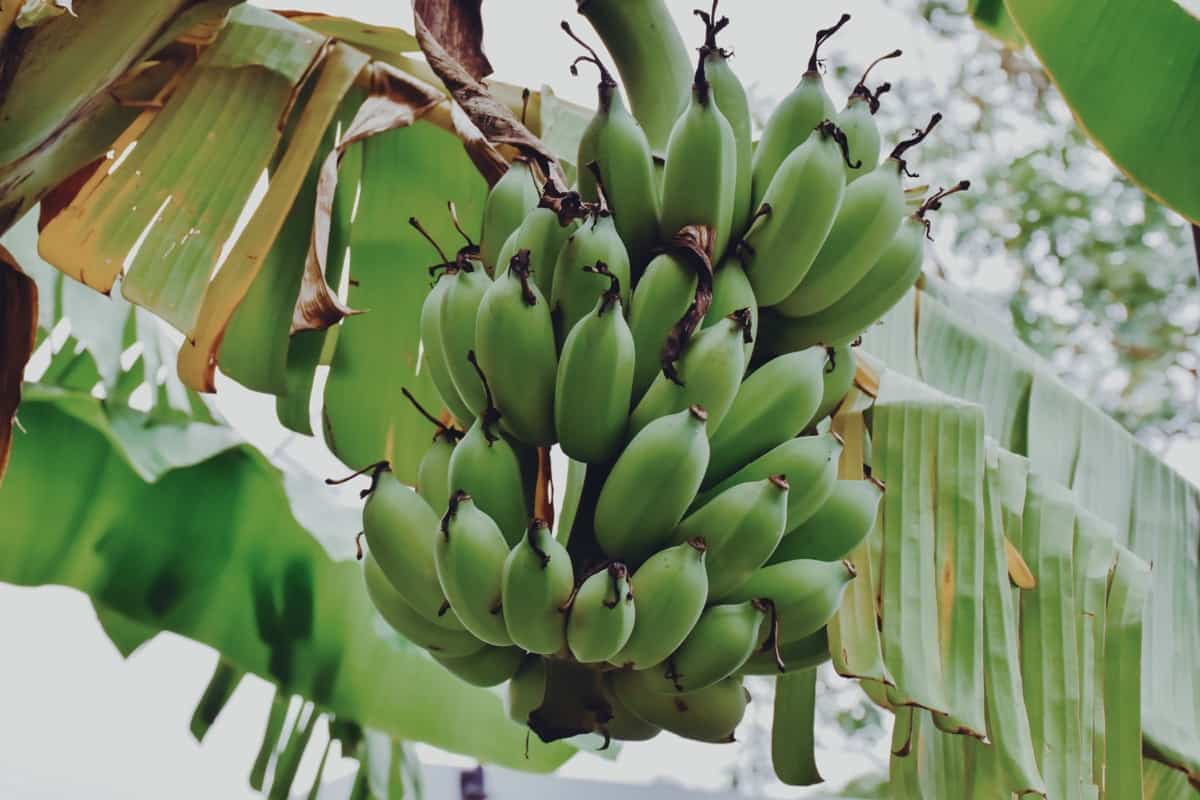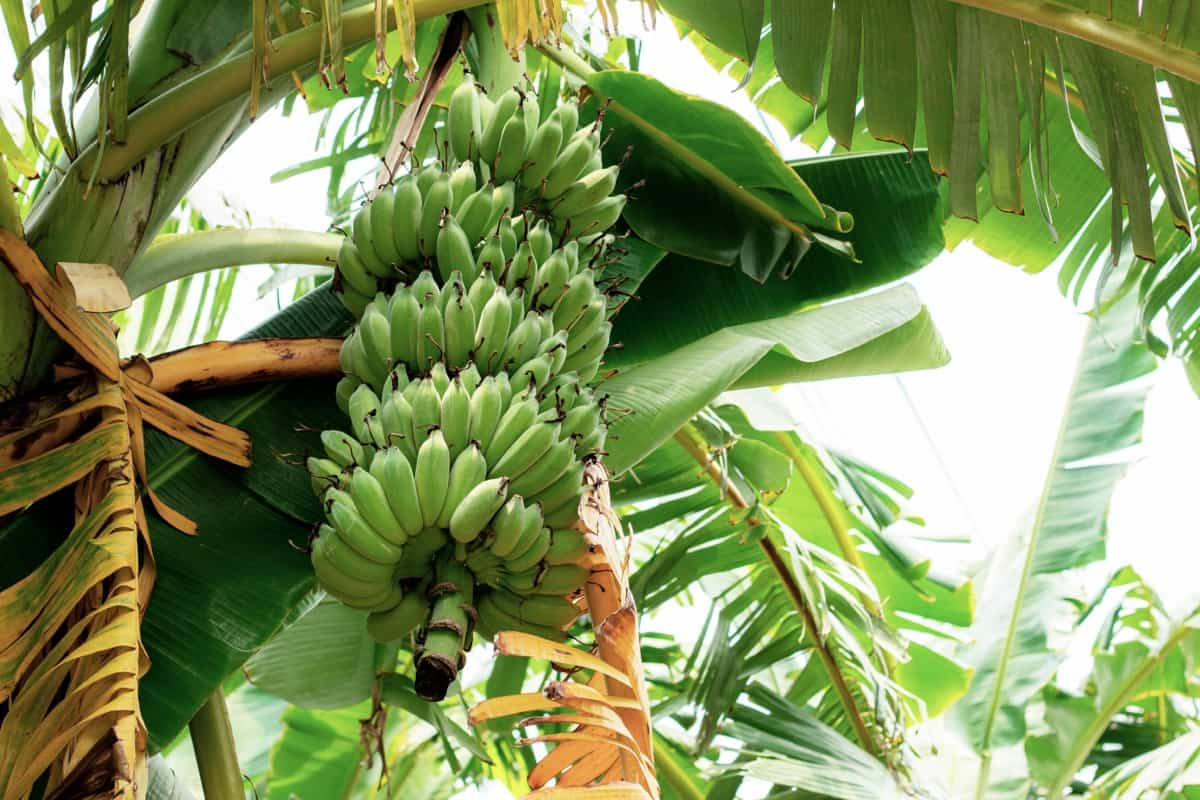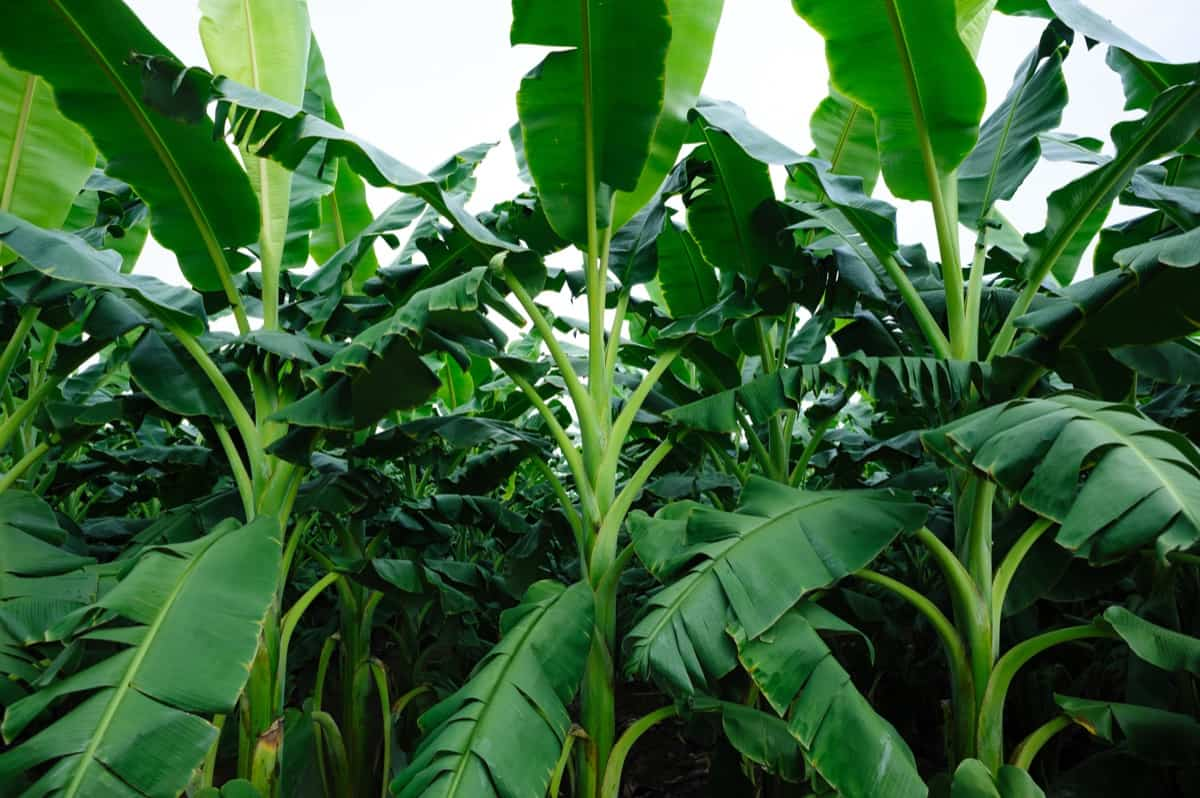Brown spots on banana plant leaves can be a sign of various underlying issues. It is important to address these spots promptly to ensure the health and productivity of your banana plant. This article will discuss the causes of brown spots on banana plant leaves and provide effective organic home remedies to fix this problem naturally.

How to Treat Brown Spots on Banana Tree Leaves Naturally
Natural Remedies for Brown Spots on Banana Plant Leaves
- Applying organic compost around the base of the plant can help provide the necessary nutrients to the soil, promoting healthy leaf growth.
- Ensure the plant receives adequate water, allowing the soil to dry slightly between waterings. Avoid waterlogging the soil, which can promote fungal growth and brown spots.
- Trim any overcrowded or damaged leaves to improve air circulation within the plant. Additionally, consider spacing banana plants at appropriate distances to prevent overcrowding.
Causes of Brown Spots on Banana Plant Leaves
- Fungal infections like Sigatoka disease are caused by fungi Mycosphaerella fijiensis and Mycosphaerella musicola, which can attack the leaves, forming small brown spots that gradually enlarge and merge.
- Bacterial infections can also result in brown spots on banana plant leaves. One such infection is the Xanthomonas wilt, caused by the bacteria Xanthomonas campestris pv. musacearum.
- Inadequate levels of essential nutrients such as potassium, magnesium, and manganese can manifest as discoloration in brown spots.
- Excessive exposure to direct sunlight, extreme temperatures, or prolonged periods of drought can cause physiological stress to the plants.
- Certain pests and insects, such as banana weevils, aphids, or mites, can damage banana plant leaves, forming brown spots.
Home Remedies to Fix Brown Spots on Banana Plant Leaves
- Dilute neem oil with water according to the instructions on the product and spray it on the affected leaves. Repeat this treatment monthly twice until the brown spots disappear.
- Mix one tablespoon of baking soda in 4 liters of water and spray this solution on the affected leaves. Repeat this treatment every week until the brown spots fade away.
- Make a solution by mixing two tablespoons of Epsom salt in one liter of water and apply the solution to the affected leaves using a spray bottle. This remedy can help correct nutrient deficiencies and promote healthy leaf growth.
- Mix one part milk with two parts of water and spray it on the affected leaves. Repeat this treatment every week until the brown spots fade away.
Treating Fungal Infections on Banana Plant Leaves Naturally
Dilute neem oil according to the instructions on the product and spray it onto the affected leaves. Repeat this treatment every few weeks until the infection clears up. Mix one tablespoon of baking soda in 4 liters of water and add a few drops of liquid soap. Spray this solution onto the infected leaves, covering both sides.
Baking soda creates an alkaline environment that inhibits fungal growth. Copper-based fungicides are considered natural treatments for fungal infections. These fungicides damage the fungus’s cell walls, preventing its growth. However, it is important to note that copper can be toxic to plants if used excessively.
Preventing Nutrient Deficiencies in Banana Plants
Preventing nutrient deficiencies in banana plants is essential for their healthy growth and optimal fruit production. By conducting soil tests, incorporating organic matter, like compost or well-aged manure, into the soil before planting can improve its nutrient-holding capacity and overall fertility. Mulching around the base of banana plants with organic materials like straw or wood chips can help conserve moisture, suppress weed growth, and provide slow-release nutrients as the mulch breaks down.
In case you missed it: 1-Acre Banana Farming Cost and Profit Analysis: Cultivation Economics and Production Project Report

Organic Solutions for Pest Infestations on Banana Plants
- Encouraging natural predators to inhabit your banana plantation is another effective organic solution. Birds, lizards, and frogs are natural predators that feed on insects and can help control pest populations.
- Ladybugs, lacewings, and predatory mites are beneficial insects that feed on common banana pests like aphids and spider mites.
- Spray garlic spray solution on the affected parts of the banana plants. This organic solution is effective against spider mites, aphids, and caterpillars.
- Install sticky traps or yellow boards coated with adhesive to catch flying insects like fruit flies.
Reducing Environmental Stress in Banana Plants
Banana plants are particularly sensitive to certain stressors, including extreme temperatures, water scarcity, excessive rainfall, poor soil quality, pests, diseases, and improper management practices. These stressors can lead to reduced yields, stunted growth, decreased fruit quality, and increased vulnerability to pests and diseases.
By implementing best practices such as site selection, irrigation management, nutrient management, pest and disease control, and climate adaptation, farmers and growers can mitigate the adverse effects of environmental stress and optimize banana plant growth and productivity.
Effective Ways to Treat Brown Spots on Banana Leaves
- Proper Hygiene: Remove any dirt, debris, or microorganisms that may contribute to the development of brown spots.
- Avoid Overwatering: Ensure that the banana plants are not overwatered. Water them moderately, and the soil should be allowed to dry between waterings.
- Pruning: Use clean and sharp pruning shears to remove damaged leaves or sections carefully.
- Nutrient Management: Use a balanced fertilizer specifically formulated for banana plants to provide the necessary nutrients.
- Pest Control: Use insecticidal soaps or neem oil to control pests, following the instructions on the product label.
- Environmental Factors: To minimize these effects, provide shade or relocate the banana plants to a spot with more suitable conditions.
Natural Treatments for Leaf Discoloration in Banana Plants
- Spray the neem oil solution onto the leaves, focusing on the affected areas. Repeat this treatment every two weeks until the discoloration improves.
- Apply the Epsom salt solution to the soil around the base of the banana plant. This will help correct magnesium deficiency, a common cause of leaf discoloration.
- Compost tea is a natural source of nutrients that can boost the overall health of banana plants. A weekly application of compost tea around banana plants is recommended.
- Seaweed extract is rich in micronutrients and growth-promoting hormones that can enhance the vigor of banana plants. Dilute seaweed extract according to the label instructions and apply it to the leaves and soil.
Promoting Healthy Leaf Growth in Banana Plants
- Apply a balanced fertilizer like 10-10-10 or 14-14-14 every 2-3 months during the growing season.
- Ensure your banana plants receive at least 6 to 8 hours of direct sunlight daily.
- Remove any dead, damaged, or diseased leaves to prevent the spread of pathogens. Additionally, thinning out overcrowded leaves allows for better air circulation and sunlight penetration, encouraging new leaf development.
- Regular inspection of the leaves and immediate action to control and eradicate any pests or diseases is essential to prevent damage to the leaves and overall plant health.
- Organic mulch materials like straw or wood chips can also break down over time and provide additional nutrients to the soil, promoting healthy leaf growth.
In case you missed it: How to Grow and Care for Banana Bonsai: Planting Instructions

Conclusion
By identifying the causes of brown spots on banana plant leaves and implementing these effective organic home remedies, you can treat this issue naturally and promote the overall health of your banana plant. Remember to be consistent with the remedies and monitor the plant’s progress.
- Feed Your Flock for Less: Top 10 Tips to Save on Chicken Feed
- Ultimate Guide to Ossabaw Island Hog: Breeding, Raising, Diet, and Care
- Hatching Answers: The Top 10 Reasons Your Chickens Aren’t Laying Eggs
- Eggs and Economics: Breaking Down the Cost of Raising Backyard Chickens
- Defend Your Greens: Proven Methods to Keep Iguanas Out of Your Garden
- Ultimate Guide to Cinnamon Queen Chicken: A Comprehensive Guide for Beginners
- Ultimate Guide to California Tan Chicken: Breeding, Raising, Diet, Egg-Production and Care
- Ultimate Guide to Marsh Daisy Chicken: Breeding, Raising, Diet, and Care
- 10 Types of Chicken Farming Businesses You Can Start for Profits